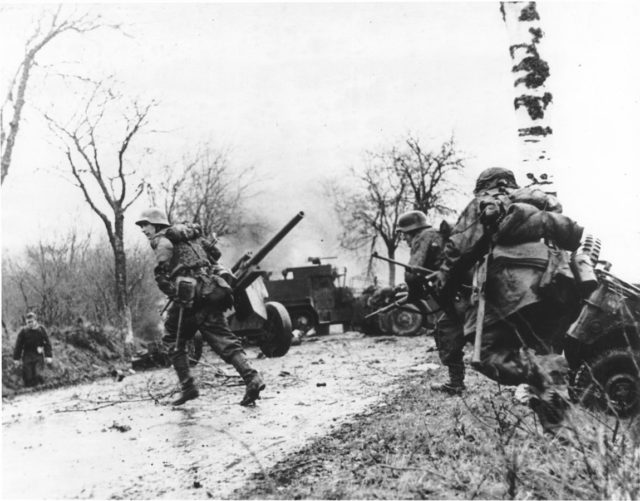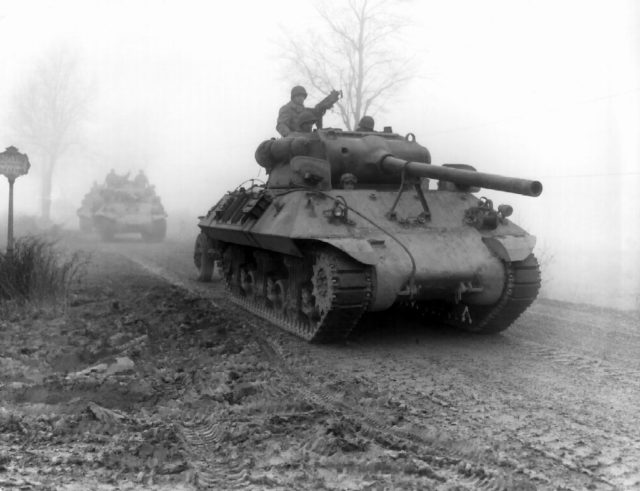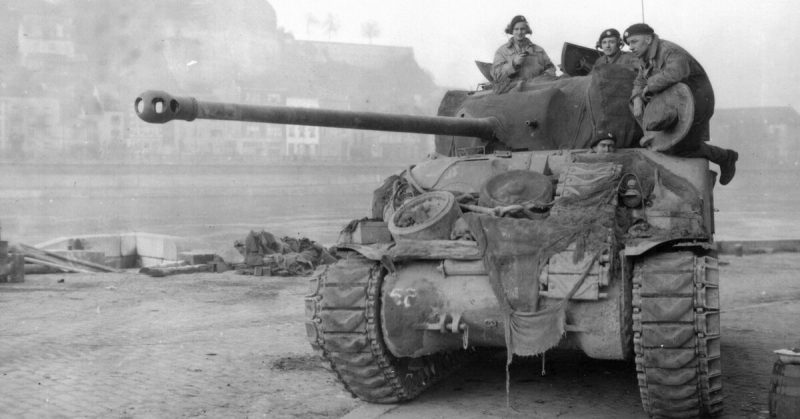On December 16, 1944, Allied troops were caught by surprise. A massive offensive by German forces struck west out of the Ardennes region, smashing into the Allied lines. For the first time since D-Day, the Allied advance was halted. In places, they were pushed back.
Throughout the war, the Allies had the advantage in military intelligence. So why did they not see the attack coming?
Signs of Trouble
There were plenty of reasons for the Allies to suspect such an attack. Months beforehand, as Hitler began preparing for the offensive, Japanese representatives in Berlin had heard rumors of the preparations. Their messages were intercepted and decrypted, giving the Allies their first clue.
Over the following months, the Germans moved troops, tanks, and planes west. They included powerful contingents of the SS, the politicized and vicious military elite of the Nazi war machine. Intercepted signals told the Allies those movements were happening, although not why. Aerial reconnaissance observations added to the evidence.
The pieces were not put together correctly. The same intelligence systems that had served so well during the Battle of Britain and the war in the Atlantic failed the Allies.

German Security
It was Hitler’s last substantial roll of the dice, and he was not taking chances on it. The German military took precautions to hide their plans from the Allies.
Hitler revealed his plans only to a select few. Oberstgruppenführer Sepp Dietrich, the leader of the new Sixth Panzer Army, went for several weeks without knowing about the operation his army was created to do.
Radio silence was imposed upon the lower formations of the military. It was a sensible precaution, given that the Allies regularly intercepted and decoded German signals. It was undermined by the fact the Allies had broken the Enigma encryption used for top-level messages, but it reduced the evidence emerging.
The operation had a defensive-sounding cover name, but that turned out to be irrelevant, as the Allies never knew it.
More Immediate Concerns
One of the biggest distractions for the Allies was their success.
They had developed their intelligence operations during a defensive period. When they were concerned with fending off Luftwaffe raids on England and Panzer offensives in North Africa, the full focus of attention was on looking out for enemy attacks.
That changed as the Allies took the offensive in North Africa and then Italy. Then they advanced into Europe on an unprecedented scale in the summer and fall of 1944.
From the Canadian’s march across Holland through the British push toward the Rhine to the American strike toward Germany’s industrial heartland, they were involved in a series of massive attacks. Their focus was on looking for information that might hinder their progress, rather than a counter-offensive from Germany.
Over-Optimism
Over-confidence was clearly a factor.
The D-Day landings had been an extraordinary success, an achievement with no parallel in military history. Operation Cobra and Patton’s drive across France had been so swift and decisive that American tanks had run out of fuel before they ran out of space to maneuver. The closing of the Falaise gap had destroyed a German army, with 10,000 men killed and 50,000 captured.
It created a sense of euphoria and belief that the Allies were unstoppable. The Germans appeared to be on the back foot. In such an atmosphere, it was all too easy to overlook the enemy’s will to attack.
The Nature of the Ardennes
The terrain of the Ardennes forest created a sense of false security. Hilly and thickly wooded, it was terrible ground through which to make an attack, especially one using tanks. Not only were the Allies not looking for trouble there, but the area was poorly defended.
That would have been an understandable mistake if not for a vital precedent. Less than five years before, Hitler had launched a successful offensive through the Ardennes. The French delusion that it was not possible was a factor in their country’s swift defeat.
No-one considered that Hitler might repeat what had worked for him before.

Bad Weather
Hitler’s cunning and Allied shortcomings were important, but chance also played a part in hiding the Ardennes offensive.
Alongside signals interception, the other most important tool of Allied intelligence gathering was photographic reconnaissance (PR). From early in the war, the British had been developing techniques for photographing enemy bases and formations from the air, and for interpreting the meaning of what they saw. It allowed them to identify German troop build-ups and anticipate attacks.
The biggest limitation on PR was the weather. To safely photograph enemy formations, intelligence planes had to fly high overhead. Bad weather could easily block their ability to see the ground and what was happening there.
In the days leading up to the Ardennes breakout, the weather turned against the Allies. PR could not see what was happening. They were effectively watching the Germans with one eye closed.
Falling into the Firefighting Theory
Those problems led to and were aggravated by the Allied commanders’ expectations of the Germans.
Assuming they were on the run, the Allies expected enemy operations just to be firefighting – rushing to counter the blaze of Allied attacks rather than planning an offensive. When they heard German troops were heading west, they assumed it was for defense. The possibility of the Germans planning an assault was never seriously considered.
A combination of over-confidence, limited thinking, and missing intelligence kept the Allies from foreseeing the German attack. That failure mattered as it cost lives and slowed their advance.
Ultimately, their offensive came too late to save Nazi Germany from defeat.
Sources:
Ralph Bennett (1999), Behind the Battle: Intelligence in the War with Germany 1939-1945
Nigel Cawthorne (2004), Turning the Tide: Decisive Battles of WWII
